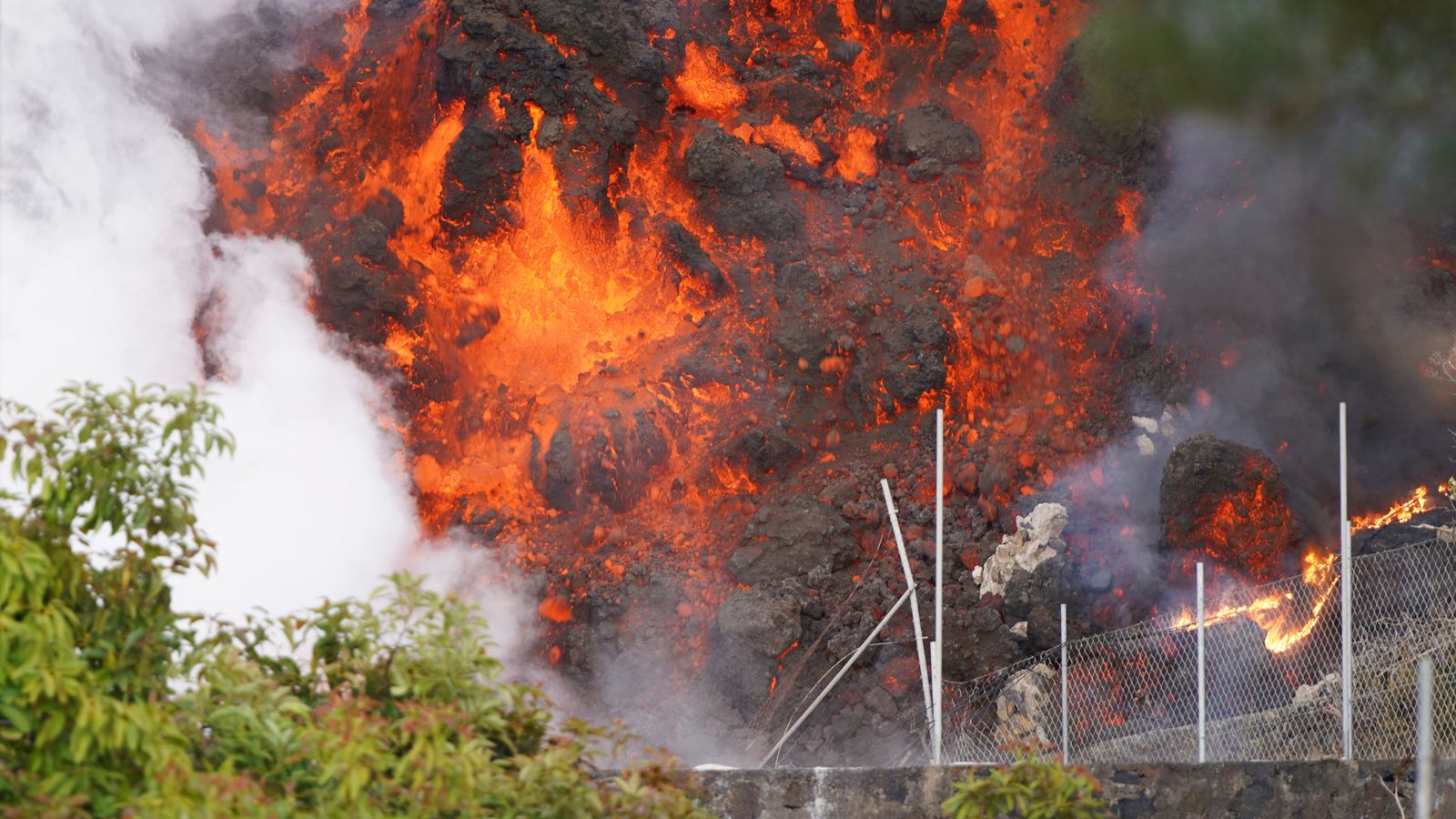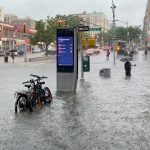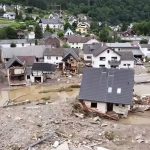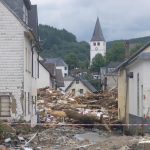A lava flow which has forced the evacuation of thousands of people – including tourists – in the Canary Islands could reach the Atlantic Ocean and cause clouds of toxic gases and more explosions, experts have warned.
Streams of molten rock were initially expected to reach the ocean on Monday night but have since slowed, officials said.
A new stream of lava later erupted from the Cumbre Vieja volcano, prompting the evacuation of more residents in El Paso, on the island of La Palma.
Please use Chrome browser for a more accessible video player
Lava with a temperature of more than 1,000C (1,800F) was still flowing at 700 metres (2,300ft) per hour on Monday, according to the Canary Islands Volcanology Institute, but mostly through unpopulated areas.
Explosions and clouds of acidic steam are expected when it meets the Atlantic Ocean, although it is unclear when this will happen.
Around 6,000 people have been evacuated and 150 homes have been destroyed since the eruption on Sunday night.
Lava was sent hundreds of metres into the air, engulfing forests and sending molten rock towards the ocean over a sparsely populated area of La Palma, the northwesternmost island in the Canaries archipelago.
The spread of Islamic State in Africa – how terror group’s influence is increasing
Alexander Litvinenko: Russia responsible for assassination in London, European Court of Human Rights rules
Justin Trudeau wins Canada election but falls short of a majority
No fatalities or injuries have been reported but drone footage captured two streams of black lava cutting a devastating swathe through the landscape as they advanced down the volcano’s western flank towards the sea.
The four villages evacuated on La Palma include El Paso and Los Llanos de Aridane, with temporary shelters set up to house displaced residents.
Mariano Hernandez, president of La Palma island, urged people to stay away and described the scene as “bleak”.
He said a wall of lava six metres (20ft) high “is consuming houses, infrastructure [and] crops in its path to the coast”.
A Reuters witness saw the flow of molten rock slowly tear its way through a house in the village of Los Campitos, igniting the interior and sending flames through the windows and onto the roof.
Spain’s tourism minister faced criticism after telling a local radio station the eruption was an opportunity to attract visitors to the island.
“The island is open,” Reyes Maroto told Canal Sur radio, calling the sprays of lava “a wonderful show”.
“There are no restrictions on going to the island… on the contrary, we’re passing on the information so tourists know they can travel to the island and enjoy something unusual, see it for themselves,” she said.
About 360 tourists were evacuated from a resort in La Palma following the eruption and taken to the nearby island of Tenerife by boat on Monday, a spokesperson for ferry operator Fred Olsen said.
Another 180 visitors were facing the same prospect. Meanwhile, local airline Binter cancelled four flights to and from the neighbouring island of La Gomera.
La Palma had been on high alert after more than 22,000 tremors were reported in the space of a week.
Cumbre Vieja is part of a chain of volcanoes that last had a major eruption in 1971, and is one of the most active volcanic regions in the Canaries.
It lies in the south of La Palma, which is home to around 80,000 people.
Itahiza Dominguez, head of seismology at Spain’s geology institute, told Canary Islands Television that although it was too early to tell how long the eruption would last, previous eruptions had lasted weeks or even months.
Scientists said the lava flows could last for the same amount of time, but that the immediate danger to local people appeared to be over.






















